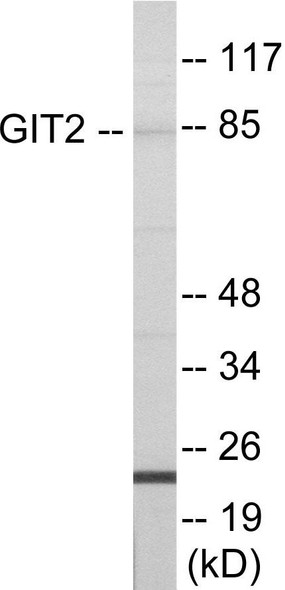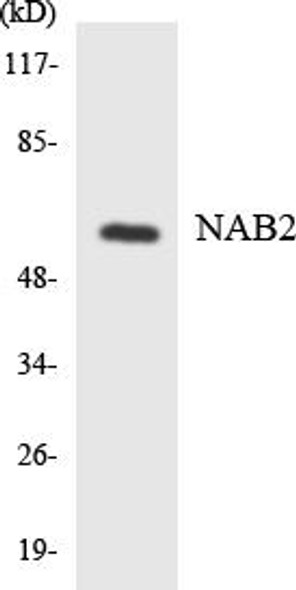Description
| Product Name: | LMTK2 Colorimetric Cell-Based ELISA |
| Product Code: | CBCAB01150 |
| ELISA Type: | Cell-Based |
| Target: | LMTK2 |
| Reactivity: | Human |
| Dynamic Range: | > 5000 Cells |
| Detection Method: | Colorimetric 450 nmStorage/Stability:4°C/6 Months |
| Format: | 96-Well Microplate |
The LMTK2 Colorimetric Cell-Based ELISA Kit is a convenient, lysate-free, high throughput and sensitive assay kit that can detect LMTK2 protein expression profile in cells. The kit can be used for measuring the relative amounts of LMTK2 in cultured cells as well as screening for the effects that various treatments, inhibitors (ie siRNA or chemicals), or activators have on LMTK2.
Qualitative determination of LMTK2 concentration is achieved by an indirect ELISA format. In essence, LMTK2 is captured by LMTK2-specific primary antibodies while the HRP-conjugated secondary antibodies bind the Fc region of the primary antibody. Through this binding, the HRP enzyme conjugated to the secondary antibody can catalyze a colorimetric reaction upon substrate addition. Due to the qualitative nature of the Cell-Based ELISA, multiple normalization methods are needed:
| 1. | A monoclonal antibody specific for human GAPDH is included to serve as an internal positive control in normalizing the target absorbance values. |
| 2. | Following the colorimetric measurement of HRP activity via substrate addition, the Crystal Violet whole-cell staining method may be used to determine cell density. After staining, the results can be analysed by normalizing the absorbance values to cell amounts, by which the plating difference can be adjusted. |
| Database Information: | Gene ID: 22853, UniProt ID: Q8IWU2, OMIM: 610989, Unigene: Hs.444179 |
| Gene Symbol: | LMTK2 |
| Sub Type: | None |
| UniProt Protein Function: | Lmr2: a tyrosine kinase of the Lmr family that apparently phosphorylates Serine and Threonine residues. Associates with PP1C and Inh2 to form a regulatory complex that localizes to membranes. Enriched in brain and muscle. Inhibited in living cells by addition of nerve growth factor or serum. Appears to be inhibited by Cdk5/p35. |
| UniProt Protein Details: | Protein type:EC 2.7.11.1; Protein kinase, TK; Membrane protein, multi-pass; Kinase, protein; Membrane protein, integral; Protein kinase, tyrosine (receptor); TK group; Lmr family Chromosomal Location of Human Ortholog: 7q21.3 Cellular Component: early endosome; Golgi apparatus; integral to membrane; perinuclear region of cytoplasm; recycling endosome Molecular Function:protein binding; protein phosphatase inhibitor activity; protein serine/threonine kinase activity Biological Process: early endosome to late endosome transport; endocytic recycling; peptidyl-serine phosphorylation; peptidyl-threonine phosphorylation; protein amino acid autophosphorylation; protein amino acid phosphorylation; receptor recycling; transferrin transport |
| NCBI Summary: | The protein encoded by this gene belongs to the protein kinase superfamily and the protein tyrosine kinase family. It contains N-terminal transmembrane helices and a long C-terminal cytoplasmic tail with serine/threonine/tyrosine kinase activity. This protein interacts with several other proteins, such as Inhibitor-2 (Inh2), protein phosphatase-1 (PP1C), p35, and myosin VI. It phosporylates other proteins, and is itself also phosporylated when interacting with cyclin-dependent kinase 5 (cdk5)/p35 complex. This protein involves in nerve growth factor (NGF)-TrkA signalling, and also plays a critical role in endosomal membrane trafficking. Mouse studies suggested an essential role of this protein in spermatogenesis. [provided by RefSeq, Oct 2009] |
| UniProt Code: | Q8IWU2 |
| NCBI GenInfo Identifier: | 145559492 |
| NCBI Gene ID: | 22853 |
| NCBI Accession: | Q8IWU2.2 |
| UniProt Secondary Accession: | Q8IWU2,Q75MG7, Q9UPS3, A4D272, |
| UniProt Related Accession: | Q8IWU2 |
| Molecular Weight: | 164,900 Da |
| NCBI Full Name: | Serine/threonine-protein kinase LMTK2 |
| NCBI Synonym Full Names: | lemur tyrosine kinase 2 |
| NCBI Official Symbol: | LMTK2 |
| NCBI Official Synonym Symbols: | BREK; KPI2; LMR2; cprk; KPI-2; hBREK; AATYK2; PPP1R100 |
| NCBI Protein Information: | serine/threonine-protein kinase LMTK2 |
| UniProt Protein Name: | Serine/threonine-protein kinase LMTK2 |
| UniProt Synonym Protein Names: | Apoptosis-associated tyrosine kinase 2; Brain-enriched kinase; hBREK; CDK5/p35-regulated kinase; CPRK; Kinase/phosphatase/inhibitor 2; Lemur tyrosine kinase 2; Serine/threonine-protein kinase KPI-2 |
| Protein Family: | Serine/threonine-protein kinase |
| UniProt Gene Name: | LMTK2 |
| UniProt Entry Name: | LMTK2_HUMAN |
| Component | Quantity |
| 96-Well Cell Culture Clear-Bottom Microplate | 2 plates |
| 10X TBS | 24 mL |
| Quenching Buffer | 24 mL |
| Blocking Buffer | 50 mL |
| 15X Wash Buffer | 50 mL |
| Primary Antibody Diluent | 12 mL |
| 100x Anti-Phospho Target Antibody | 60 µL |
| 100x Anti-Target Antibody | 60 µL |
| Anti-GAPDH Antibody | 60 µL |
| HRP-Conjugated Anti-Rabbit IgG Antibody | 12 mL |
| HRP-Conjugated Anti-Mouse IgG Antibody | 12 mL |
| SDS Solution | 12 mL |
| Stop Solution | 24 mL |
| Ready-to-Use Substrate | 12 mL |
| Crystal Violet Solution | 12 mL |
| Adhesive Plate Seals | 2 seals |
The following materials and/or equipment are NOT provided in this kit but are necessary to successfully conduct the experiment:
- Microplate reader able to measure absorbance at 450 nm and/or 595 nm for Crystal Violet Cell Staining (Optional)
- Micropipettes with capability of measuring volumes ranging from 1 µL to 1 ml
- 37% formaldehyde (Sigma Cat# F-8775) or formaldehyde from other sources
- Squirt bottle, manifold dispenser, multichannel pipette reservoir or automated microplate washer
- Graph paper or computer software capable of generating or displaying logarithmic functions
- Absorbent papers or vacuum aspirator
- Test tubes or microfuge tubes capable of storing ≥1 ml
- Poly-L-Lysine (Sigma Cat# P4832 for suspension cells)
- Orbital shaker (optional)
- Deionized or sterile water
*Note: Protocols are specific to each batch/lot. For the correct instructions please follow the protocol included in your kit.
| Step | Procedure |
| 1. | Seed 200 µL of 20,000 adherent cells in culture medium in each well of a 96-well plate. The plates included in the kit are sterile and treated for cell culture. For suspension cells and loosely attached cells, coat the plates with 100 µL of 10 µg/ml Poly-L-Lysine (not included) to each well of a 96-well plate for 30 minutes at 37°C prior to adding cells. |
| 2. | Incubate the cells for overnight at 37°C, 5% CO2. |
| 3. | Treat the cells as desired. |
| 4. | Remove the cell culture medium and rinse with 200 µL of 1x TBS, twice. |
| 5. | Fix the cells by incubating with 100 µL of Fixing Solution for 20 minutes at room temperature. The 4% formaldehyde is used for adherent cells and 8% formaldehyde is used for suspension cells and loosely attached cells. |
| 6. | Remove the Fixing Solution and wash the plate 3 times with 200 µL 1x Wash Buffer for five minutes each time with gentle shaking on the orbital shaker. The plate can be stored at 4°C for a week. |
| 7. | Add 100 µL of Quenching Buffer and incubate for 20 minutes at room temperature. |
| 8. | Wash the plate 3 times with 1x Wash Buffer for 5 minutes each time. |
| 9. | Add 200 µL of Blocking Buffer and incubate for 1 hour at room temperature. |
| 10. | Wash 3 times with 200 µL of 1x Wash Buffer for 5 minutes each time. |
| 11. | Add 50 µL of 1x primary antibodies (Anti-LMTK2 Antibody and/or Anti-GAPDH Antibody) to the corresponding wells, cover with Parafilm and incubate for 16 hours (overnight) at 4°C. If the target expression is known to be high, incubate for 2 hours at room temperature. |
| 12. | Wash 3 times with 200 µL of 1x Wash Buffer for 5 minutes each time. |
| 13. | Add 50 µL of 1x secondary antibodies (HRP-Conjugated AntiRabbit IgG Antibody or HRP-Conjugated Anti-Mouse IgG Antibody) to corresponding wells and incubate for 1.5 hours at room temperature. |
| 14. | Wash 3 times with 200 µL of 1x Wash Buffer for 5 minutes each time. |
| 15. | Add 50 µL of Ready-to-Use Substrate to each well and incubate for 30 minutes at room temperature in the dark. |
| 16. | Add 50 µL of Stop Solution to each well and read OD at 450 nm immediately using the microplate reader. |
(Additional Crystal Violet staining may be performed if desired – details of this may be found in the kit technical manual.)






